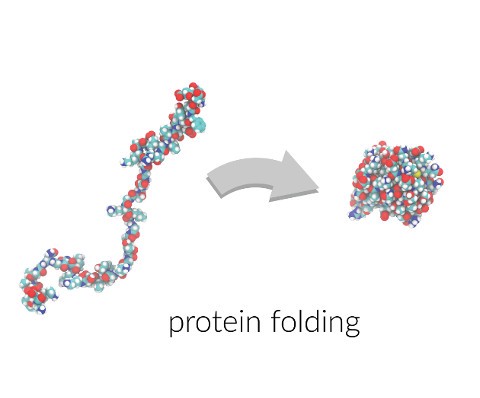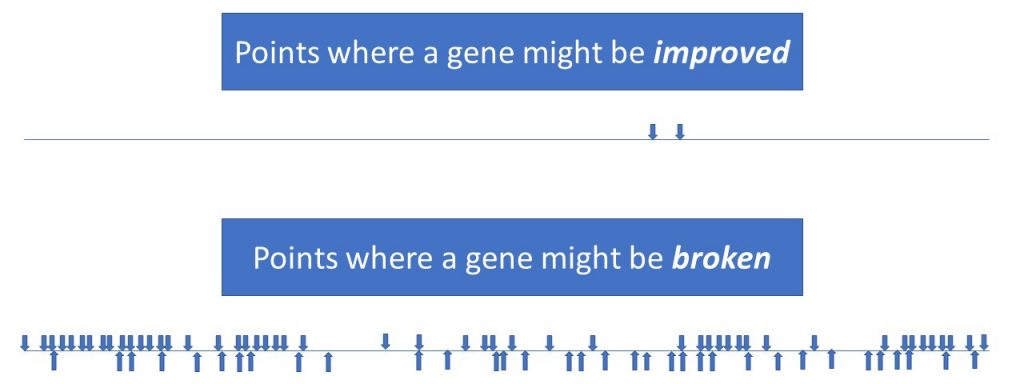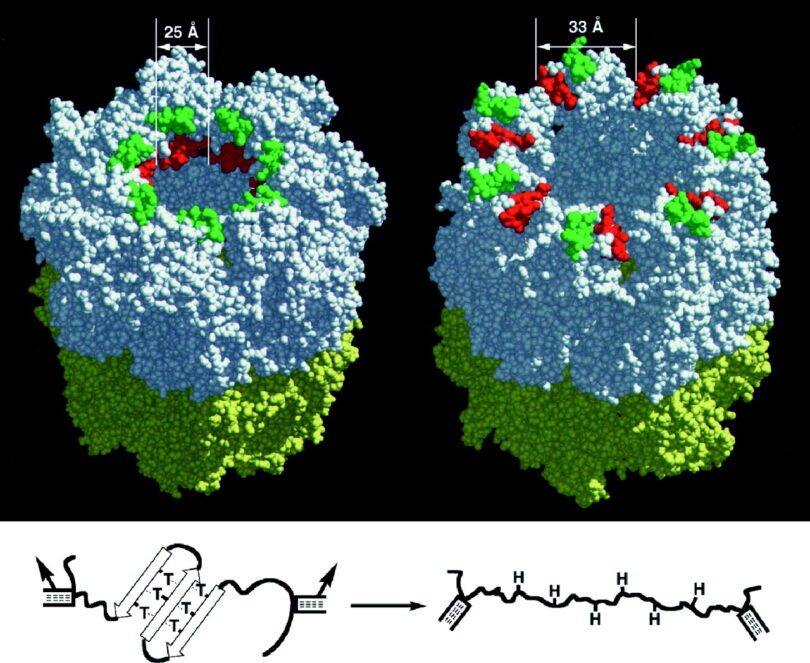“Benefical” mutations are exceedingly rare (if they actually exist at all)
Only germline mutations MIGHT provide the mechanism for transmutation or universal common ancestry of life. These mutations must render new gene sequences that confer benefit. These copy errors must be passed to offspring and confer “benefit” or a fitness gain to the organism.
Biologist Douglas Axe studied this question directly. He examined the likelihood of random copy errors in preexisting genetic sequences conferring a benefit. In other words, did the supposed mechanism behind universal common ancestry evolution empirically exist?

Axe used a profoundly simple protein (gene) of a modest 150 amino acids in length (average is WELL over 350). He constructed a model that estimated the odds of a single new protein fold being introduced within the known mutation rates as observed empirically in the lab. He reasoned that the simplest known protein fold to render a new gene is called a “hook.” A hook consists of only two amino acid alterations (in most cases).
The results of the study found that the likelihood of such an occurrence ever happening, even once, was vanishingly low.1
The problem Axe found was mutations were much more likely to destroy a gene than help it. Trying to get two mutations to add a hook proved mathematically absurd.

Based on a chart in Darwin Devolves by Stephen Myers as reproduced from “The new science about DNA that Challenges Evolution” by Michael Behe
Chances of a hook protein emerging
Axe determined that a random mutation conferring a hook protein fold had a minuscule 1 in 1077 chance of occurring even once.1 That is one followed by seventy-seven zeros! This is a nearly incomprehensible and absurd unlikelihood. To put it into perspective, there are an estimated 2.4 x 1082 atoms in the universe!2
Each birth or replication was (and is) a trial opportunity
However, Axe recognized that there were many opportunities or trials for this random event to have happened considering the vast number of life the earth has had over its (presumed) 4.5 billion year history. There was one new trial at conception (or replication) of each life form that has ever existed on earth (he included both extant and extinct life). Side note: The experiment presumes life already exists with DNA sequences and the pre-existing gene that can be mutated. How this first life form existed is another matter altogether. Anyway, the estimate (including yeasts, funguses, and bacteria) was a massive 1044.1
Chances compared to all trial opportunities
Axe divided these 1077 / 1044 (exponents cancel out in division 77 – 44 = 33) and calculated the chance of a simple hook protein fold emerging on a preexisting gene sequence (on a 150 amino acid chain), throughout all life that ever existed on earth, of happening only ONCE was a remote 1 in 1033.1
That is a ten trillion, trillion, trillion, million to one chance!
Sources:
1- Axe DD. Estimating the prevalence of protein sequences adopting functional enzyme folds. J Mol Biol. 2004 Aug 27;341(5):1295-315. DOI: 10.1016/j.jmb.2004.06.058. PMID: 15321723.9-
2- Oxford University Maths “Number of atoms in the universe” Nov 2015 https://educationblog.oup.com/secondary/maths/numbers-of-atoms-in-the-universe#:~:text=Our%20galaxy%2C%20the%20Milky%20Way,2.4%20%C3%97%201067%20atoms.


